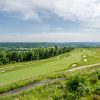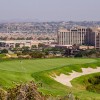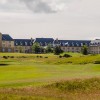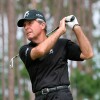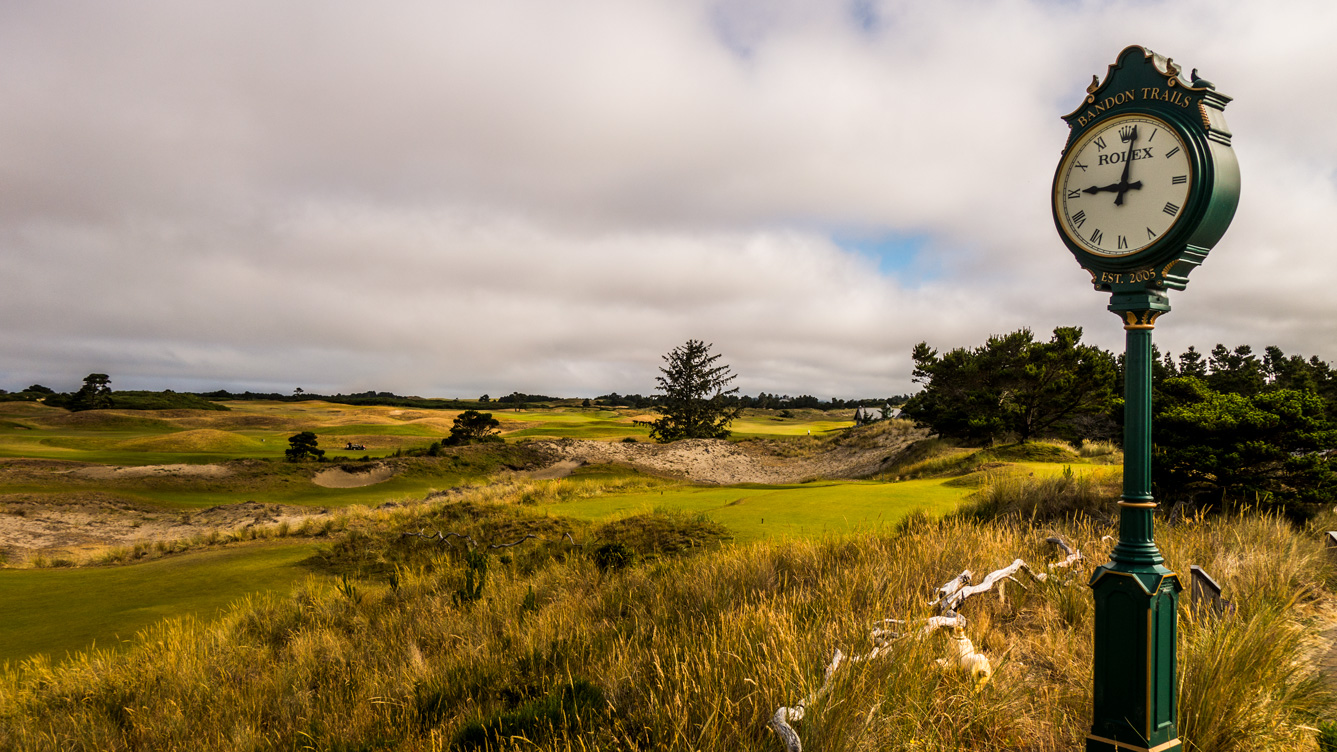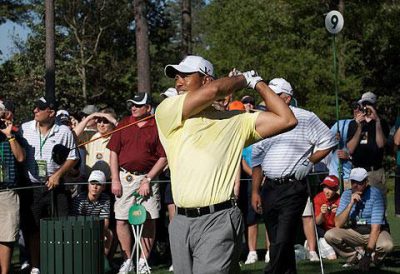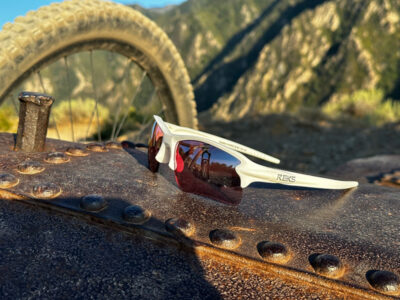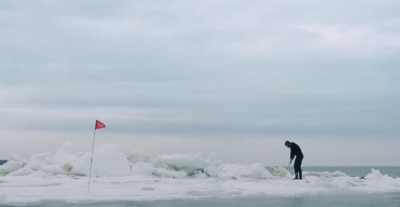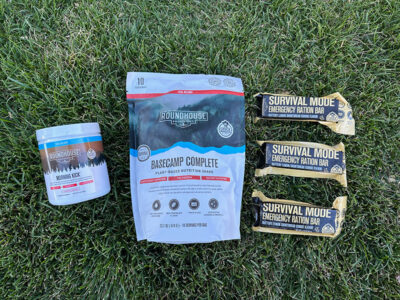Augusta National Golf Club Eisenhower Tree Photos
Categories: Golf Courses • The Masters • Tiger Woods
Tags: Augusta National • The Masters

Tiger Woods tees off on the 17th at Augusta National with Eisenhower Tree on left
After yesterday’s news that the famous Eisenhower Tree was destroyed in the recent ice storms in Georgia, I dug through my library and found a couple of photos of the tree. Above Tiger Woods tees off and is trying to hit a high cut over the tree.
Below shows the size of the tree and how much of the fairway it guards.

Eisenhower Tree guards left side of fairway on #17 at Augusta National
Ice Storm Does What President Dwight D. Eisenhower Couldn’t, Brings Down Augusta National’s Famed 17th Pine Tree
Categories: Golf Courses • The Masters • Tiger Woods
Tags: Augusta National • The Masters
Sad news from the home of the Masters Tournament, Augusta National Golf Club. The famous Eisenhower Tree lining the left side of the 17th hole was destroyed by the recent ice storm in Georgia. The Club tried everything they could but the Eisenhower Pine Tree has been removed.
The Eisenhower Tree became famous because of President Dwight D. Eisenhower. He hated the tree and motioned for the tree to be removed. That’s when Augusta National’s co-founder Clifford Roberts declared the president “out of order.”
The tree has caused many a player problems, including Tiger Woods.
Rumor has it that Augusta National has had a backup tree picked out, ready for a time like this. I suppose we will find out what they decide to do in a couple of months when the 2014 Masters Tournament begins.
Below is a statement from Augusta National’s Billy Payne on the loss of the Eisenhower Tree:
“Like so many of our family, friends and neighbors in this community, Augusta National Golf Club has been busy cleaning up after the historic ice storm this week. Everyone affected remains in our hearts and prayers, and we likewise hope for a speedy and complete recovery for all.
“The loss of the Eisenhower Tree is difficult news to accept. We obtained opinions from the best arborists available and, unfortunately, were advised that no recovery was possible.
“We have begun deliberations of the best way to address the future of the 17th hole and to pay tribute to this iconic symbol of our history – rest assured, we will do both appropriately.
“I can report that the golf course sustained no major damage otherwise. We are now open for Member play and we will be unaffected in our preparations for the 2014 Masters Tournament.”
Masters Thursday Live Blog – Final Thoughts
Categories: Golf • PGA Tour • Pro Golf • The Masters • Tiger Woods
Tags: Augusta National • Phil Mickelson • The Masters • Tiger Woods
![]() The day’s play is over for the Thursday edition of the 2011 Masters. What a day it was. The theme of the day is low scoring with an emphasis on international players. Only 8 out of the top 23 (up to T14) players are from the USA.
The day’s play is over for the Thursday edition of the 2011 Masters. What a day it was. The theme of the day is low scoring with an emphasis on international players. Only 8 out of the top 23 (up to T14) players are from the USA.
Augusta National – Stuff you don’t see on TV
Categories: Uncategorized
Tags: Augusta National • The Masters
 Pictured right: Sun dial in front of the player’s cabin. I checked the time and it was dead on at 6:00PM!
Pictured right: Sun dial in front of the player’s cabin. I checked the time and it was dead on at 6:00PM!
In light of today’s first round of the 2010 Masters, and now that I’m no longer a Masters / Augusta National virgin, I’m going to do some posts about Augusta National the place. One of the main things I wanted to soak in while there was the vibe of the place. I wanted to get a feel for not only how perfectly every blade of grass was cut, the fact that there can exist 365 acres of land without one weed and how incredible the layout of the course was, but a feel and insight for the little things that people may not know about. Today’s post is eloquently titled “Stuff you don’t see on TV at Augusta National.” There are many aspects to the course itself which TV doesn’t or can’t capture.
What TV can’t come close to showing about Augusta National
Talk to anyone who has walked Augusta National and the first thing they’ll tell you is how hilly it is and how much elevation change there is. They always say TV doesn’t do the hills, elevation changes and contours justice. Anyone who told you that is right. The course is incredibly hilly. The elevation changes from tee to fairway, tee to green on par-3’s and approach to green is amazing.
 Pictured right: Masters Chocolate Mini Moon Pie
Pictured right: Masters Chocolate Mini Moon Pie
Blind or semi-blind approaches
Elevation changes from fairway to green on holes like #1, #5, #8 (if trying to reach this par-5 in two), #11, #15 and #17 require tee shots to travel far enough to reach a point where the green or a part of it or the pin can be seen from approach position. Shorter tee shots will result in blind or semi blind shots to the green.
Downhill approaches
The severity of some of the downhill approach shots is certainly not captured by television. In fact on some holes it doesn’t come close. The par-5 2nd hole is shown as downhill on TV, but the severity and the angle of approach is not conveyed well. Hole #2 and the drop to the green is pictured below:

Above: #2 and the drop in elevation from 280 out to the green.
The par-3 4th hole (about 240) is a huge downhill shot which on TV looks almost level. The problem with #4 especially, is that the shot must carry all the way to the proper spot on the green or it will catch a bunker or roll down a false front and off the green to bogey land. Par-3 #6 is severely downhill. I watched Kenny Perry hit shots there and they were in the air for a long time. The par-4 9th also can have a severely downhill approach to the green unless you are a bomber and can get it close to the flatter area at the bottom of the hill. #10 is a massive hole and is extremely downhill. Most know it is severely downhill but no matter how HD the cameras and TV screens are, the elevation change simply is not captured. The approach to #10 is also a tough downhill shot. When I was there fans, sorry, “patrons” were impressed if a player managed to find themselves as close as 200 yards out. The 505 yard par-4 #11 is well known for the tough downhill approach and is shown fairly well on TV. The last downhill approach of the course is the par-5 15th. TV can’t really show how thin the green looks from the top of the hill, where players debate whether or not to go for it. A perfect shot must be struck there, or it is a water ball back left or short. Bailing right finds a bunker.
The greens are not as big as they look on TV
In general, most of the greens are much smaller than I expected. #2 is about the only one which is roughly the size I thought it would be. #13 (par-5) is much smaller than I thought it would be. #17, where Jack Nicklaus made the famous birdie in 1986, is about half the size I thought it would be. How big do you think #18 is? The angle of the TV cameras somehow make this green look much larger than it really is.
Massive open space
The clubhouse looks out over the #1 tee. Beyond there, left of the tee is #9 green. Continuing in that same direction toward #8 tee and #2 green is a huge wide open space which looks surreal from many directions. Looking down from the top of the hill where #1 tee is toward that area and seeing the massive open space and thousands of patrons is amazing. Conversely, looking from #7 green or even #17 fairway, you can see all the way through that massive open space up to the clubhouse. Once again, seeing all of those bodies and all that space up the hill is an amazing sight.
Buildings

Above: The BACK side of Butler Cabin
During the broadcasts all you hear about is the clubhouse and Butler Cabin. There are several other buildings you never see on TV. Right of the clubhouse, the direction of #1 fairway, are several other cabins. Down the left side of #10 tee there are several cabins which are never seen on TV. Also, none of the concession stands (where the famous pimento cheese sandwiches are) are shown. Most are very well tucked in areas in which they cannot bee seen from the course.
Butler Cabin, speaking of buildings, is not small. I anticipated that it would be, well, a cabin. It is probably 3000+ square feet. The first image in this article is the back side of Butler Cabin.
First photos from Augusta and the 2010 Masters
Categories: Golf Life • HOG World Tour • Life • PGA Tour • Pro Golf • The Masters • Tiger Woods
Tags: Augusta National • Masters Tournament
I’m just about to catch my flight home, but I wanted to post a couple of photos from Augusta National and the 2010 Masters… First, my Dream Foursome was featured on Augusta.com’s web site!
2nd, kissing the #1 fairway. The pilgrimage is completed.

« Previous 1 2 3 Next »




